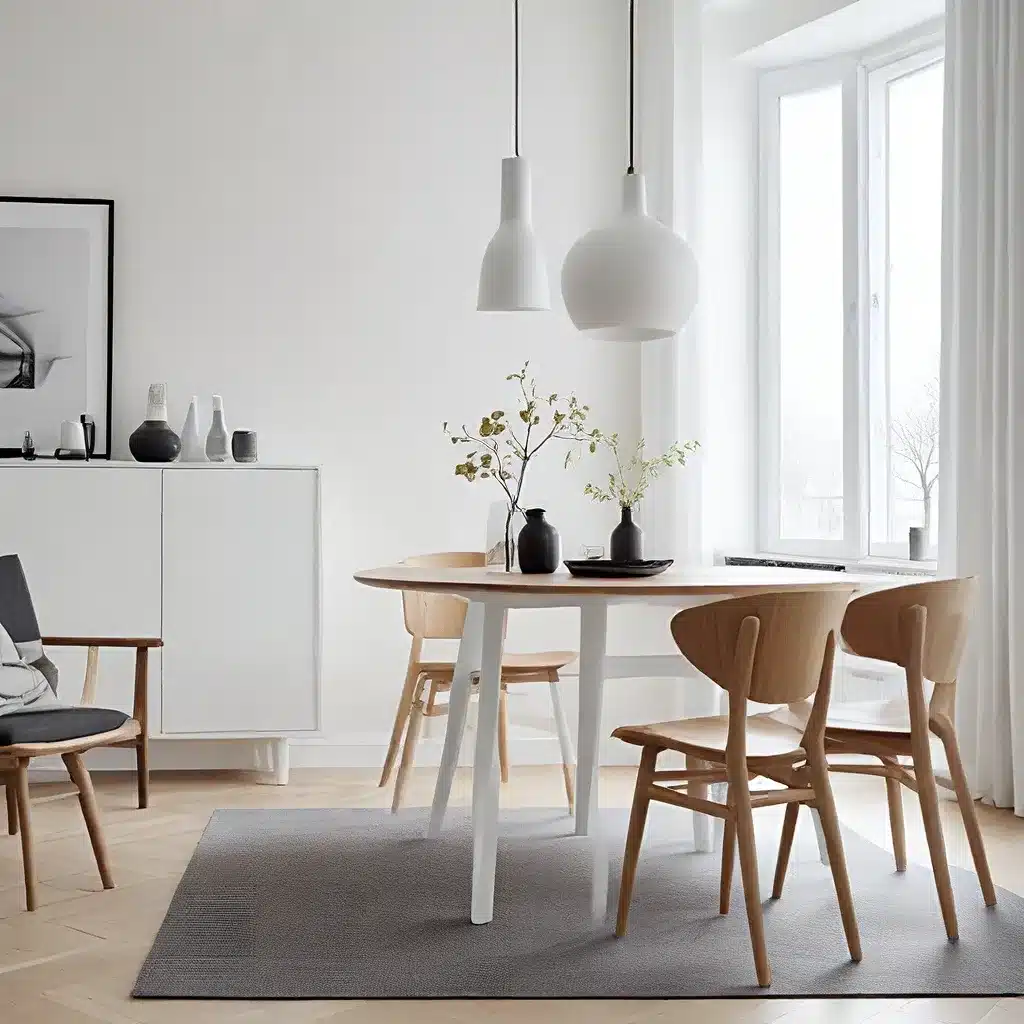
In the world of interior design, few styles captivate the imagination like the timeless elegance of Scandinavian design. This unique aesthetic, rooted in the rich cultural heritage of the Nordic countries, has gained global recognition for its ability to seamlessly blend functionality, simplicity, and a refined sense of luxury.
Through the pages of this article, we’ll delve into the core principles of Scandinavian design, explore inspirational case studies, and uncover practical tips to help you infuse your living spaces with the essence of Nordic sophistication.
Embracing Minimalism and Functionality
At the heart of Scandinavian design lies a deep appreciation for minimalism and functionality. The Alamosa Armchair, for example, embodies this ethos with its clean lines, understated elegance, and emphasis on comfort. Designers in the Nordic region have long championed the idea that less is more, crafting spaces that are uncluttered, airy, and focused on the essentials.
This commitment to minimalism extends beyond the furniture and decor, permeating the very architecture of Scandinavian homes. Large windows, open floor plans, and an abundance of natural light are hallmarks of this design approach, creating a sense of visual harmony and a seamless connection between the indoors and outdoors.
Embracing Neutral Palettes and Natural Materials
Scandinavian design is renowned for its sophisticated use of color, often favoring a neutral palette of grays, whites, and natural wood tones. This muted color scheme serves as a blank canvas, allowing the textures and materials to take center stage.
As evidenced in the Swedish home showcased, the use of dark, moody hues like olive and emerald greens creates a sense of elegance and depth, while the natural wood accents and cozy textiles add warmth and visual interest.
By embracing this restrained color palette, Scandinavian designers allow the inherent beauty of materials like natural stone, linen, and wool to shine. These organic elements not only contribute to the overall aesthetic but also instill a sense of tactile luxury and connection to the natural world.
Maximizing Natural Light and Minimalist Styling
Scandinavian design is often described as bright, airy, and serene, and for good reason. The region’s long, dark winters have fostered a deep appreciation for the power of natural light, which is expertly harnessed in the design of Nordic homes.
Large windows, strategically placed to capture the sun’s rays, flood the interiors with a soft, diffused glow that enhances the sense of spaciousness and tranquility. Coupled with the use of light-reflecting materials and a minimalist styling approach, this emphasis on natural light creates a sense of openness and calm that is truly the hallmark of Scandinavian design.
Blending Tradition and Innovation
While Scandinavian design is often associated with a timeless, pared-down aesthetic, it is also characterized by a harmonious blend of tradition and innovation. Designers in the Nordic region have a deep respect for the region’s rich cultural heritage, often drawing inspiration from the craftsmanship and materials of the past.
However, they masterfully combine these traditional elements with contemporary design sensibilities, creating a style that is both timeless and forward-thinking. This can be seen in the way Scandinavian designers seamlessly integrate vintage furnishings with sleek, modern pieces, or the way they leverage sustainable materials and cutting-edge manufacturing techniques to create products that are both beautiful and environmentally conscious.
Bringing Scandinavian Style into Your Home
For homeowners and design enthusiasts seeking to infuse their living spaces with the essence of Scandinavian sophistication, there are a few key strategies to consider:
1. Embrace a Neutral Color Palette: Start by building a foundation of soft grays, crisp whites, and natural wood tones. These soothing hues provide a canvas for layering in pops of color and texture.
2. Prioritize Functionality and Minimalism: Carefully curate your furnishings and decor, focusing on pieces that serve a purpose and contribute to the overall aesthetic. Avoid clutter and opt for clean, streamlined designs.
3. Maximize Natural Light: Ensure that your spaces are flooded with natural light by strategically placing windows, using light-reflecting materials, and incorporating sheer, lightweight window treatments.
4. Incorporate Natural Elements: Bring the outdoors in by incorporating natural materials like linen, wool, and marble into your design scheme. These organic elements add depth, texture, and a sense of connection to the natural world.
5. Work with a Professional Interior Designer: Collaborating with an experienced interior designer who specializes in Scandinavian design can be a game-changer. They can help you navigate the nuances of the style, curate custom furnishings, and create a cohesive, personalized space that reflects your unique style and preferences.
By embracing these principles of Scandinavian design, you can transform your living spaces into oases of sophisticated simplicity, where every element works in harmony to create a serene and inviting atmosphere. With the right approach, you can bring the timeless elegance of Nordic design into your own home and experience the beauty of Scandinavian sophistication firsthand.

